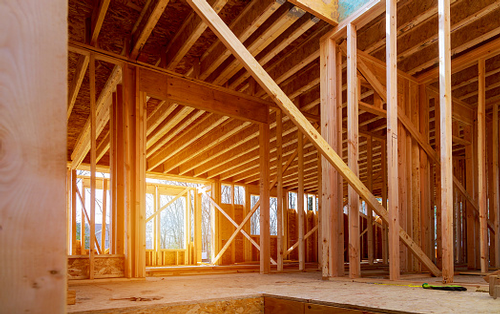WEDNESDAY, AUGUST 16, 2023
Construction input prices were unchanged in July compared to the previous month, according to an Associated Builders and Contractors analysis of U.S. Bureau of Labor Statistics Producer Price Index data.
Nonresidential construction input prices reportedly fell 0.1% for the month.
“Goods prices continue to stagnate in the context of improved supply chains and a sluggish global economy,” said ABC Chief Economist Anirban Basu. “It has been the improvement of supply chains that best explains recent positive economic outcomes in the U.S. economy.
“As supply chains have normalized, unmet demand has been more readily satisfied. That has propelled transactional volume and economic growth. At the same time, the improved supply chain has helped push prices lower, contributing to the disinflation observable both in yesterday’s consumer price index data and today’s producer price index release.”
Overall, construction input prices are 3.1% lower than a year ago, while nonresidential construction input prices are 2.7% lower, ABC explains.
However, prices have increased in all three energy subcategories. Natural gas prices were up 11.0%, while crude petroleum and unprocessed energy materials prices increased 8.4% and 8.0%, respectively.

 |
| photovs / Getty Images |
|
Construction input prices were unchanged in July compared to the previous month, according to an Associated Builders and Contractors analysis of U.S. Bureau of Labor Statistics Producer Price Index data. |
“With the exception of energy prices, which are heavily influenced by a cocktail of geopolitics, weather and investor frenzy, construction materials prices should be reasonably stable during the months to come,” said Basu.
“One exception may be construction equipment prices. The price of equipment expanded nearly 2% on a monthly basis in July and nearly 10% over the past year. Many contractors continue to complain about lengthy lead times for equipment as the nation continues to expand spending on infrastructure.”
The Associated General Contractors of America analysis found that while contractors are finally seeing some relief from recent supply chain problems and price escalations, the competitive market means key materials are still very hard to find.
According to the AGC release, the impacts from the pandemic and Russia’s attack on Ukraine have slowed, but long lead times reportedly remain for electrical equipment and construction machinery. Cement, lumber, plywood and asphalt coatings are some of the materials showing “persistent” price increases.
The analysis also reportedly found that contractors’ bid prices fell by 1.4% last month. That said, officials continue to express concerns over the new Buy America requirements of the bipartisan infrastructure law.
“Federal officials continue to inhibit the ability of contractors to utilize an established diversified construction material supply chain by drumming up strict regulations,” said Stephen E. Sandherr, the association’s chief executive officer. “Infrastructure is needed now, and until we have the capability of keeping all manufacturing on U.S. soil, we need to take advantage of all resources available.”
Construction Spending Increase
Earlier this month, according to an ABC analysis, nonresidential construction spending in the United States increased by a modest 0.1% in June. However, data from the U.S. Census Bureau finds that spending is up overall 18% in the past year, totaling $1.07 trillion in June on a seasonally adjusted basis.
“Nonresidential construction spending growth downshifted over the past two months,” said Basu.
“While stakeholders can expect ongoing spending growth in public nonresidential construction segments as more Infrastructure Investment and Jobs Act monies flow into the economy, private developer-driven activity appears to be drying up in the context of higher costs of capital and tighter credit conditions."
Spending increased on a monthly basis in 12 of the 16 nonresidential subcategories, including:
Private nonresidential spending was virtually unchanged, while public nonresidential construction spending rose 0.3% in June.
Tagged categories: Associated Builders and Contractors; Associated Builders and Contractors Inc. (ABC); Associated General Contractors; Associated General Contractors (AGC); Bidding; Building materials; Coating Materials; Concrete coatings and treatments; Economy; Good Technical Practice; Market; Market data; Market forecasts; Market research; Market trends; Program/Project Management; Projects - Commercial